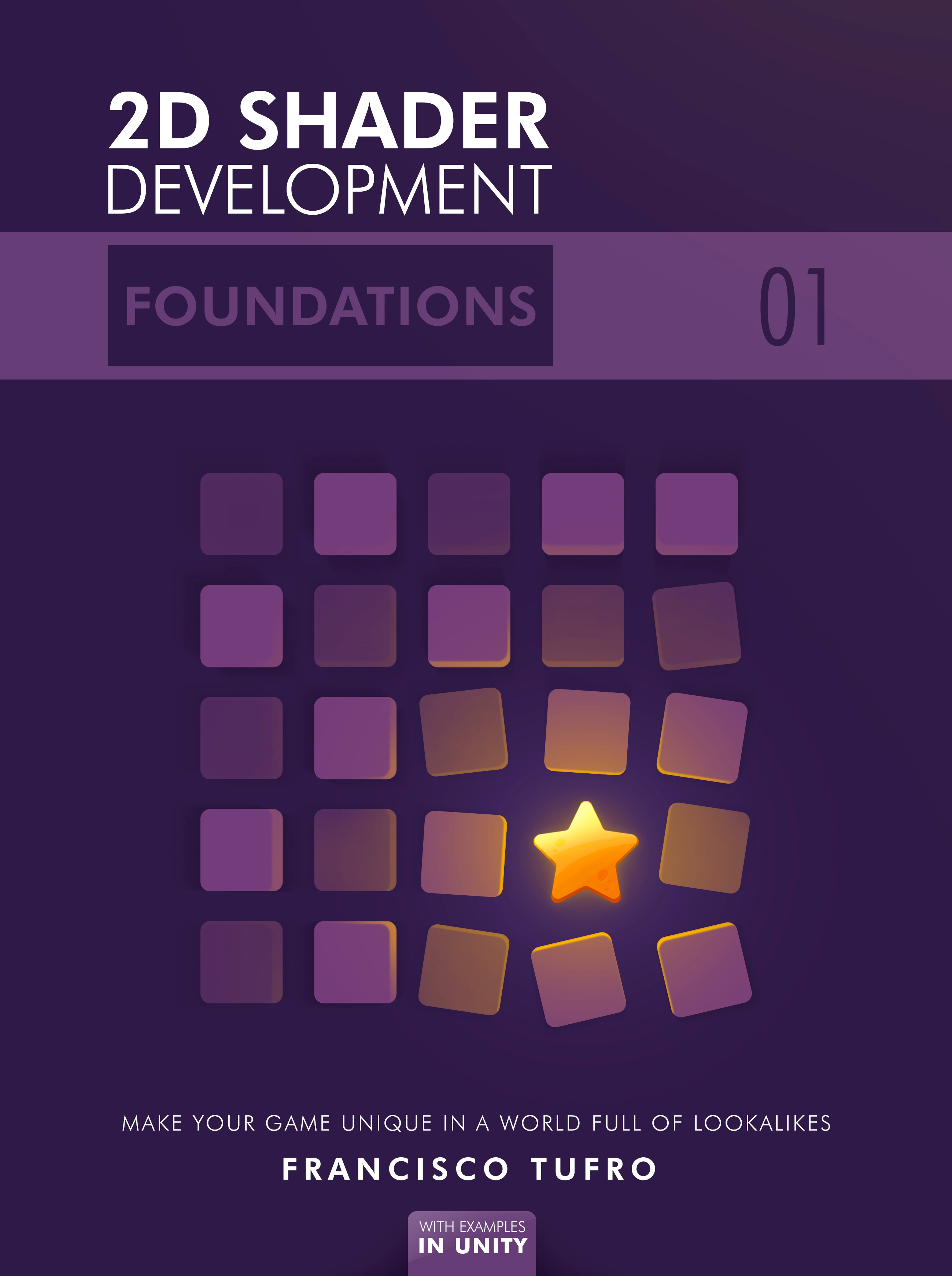Table of Contents
-
Introduction to the series
- Motivation for the series
- I use Unity, why should I bother learning shader programming at all?
- Who are these books for?
- I need help! What can I do?
-
Series Overview
- 1. Foundations
- 2. Illumination & Shadows
- 3. Procedural Texture Manipulation
- 4. Full-Screen Effects
- Downloading the source code for the exercises
-
Introduction to 2D Illumination
- Why illumination?
-
Static Illumination
-
Using Additive blend to light things up
- Particles
- Refreshing how to implement Additive
-
Using Multiply blend to create shadows
- Refreshing how to implement Multiply
- Limits of static illumination
- Exercise 1
- Conclusion
-
Using Additive blend to light things up
-
Kinda Dynamic Local Ambient Lights
-
Creating our own 2D Light Sources
- Ambient
- Directional
- Point
- Creating the Lights prefabs
-
Object coloring
- A note on Culling
- Full code for the shader
-
Ambient Lights
-
Using the
TextureWithAmbientLightshader in our character -
Controlling the gradient shape with
_Thresholdand_Smoothness
-
Using the
- Exercise 2: Directional Lights
-
Point Lights
-
Using the
TextureWithPointLightshader in our character - Adding Point light logic
-
Using the
- Interpolating between lights
- Conclusion
-
Creating our own 2D Light Sources
-
Screen-Space Automatic Rim Lights
-
Rendering Alpha Only
- Scene Setup
-
Rendering to a
RenderTexture - Rendering only the Alpha channel
-
Calculating Normals
- Blurring the image
- Generating the Normal map
- Exercise 3: Lighting
- Conclusion
-
Rendering Alpha Only
-
Dynamic Lights using Normal Mapping
- Asset Requirement
- Math derivation
- Generating the Normal Map in a Shader
- Exercise 2: Normal Map Generation
- Using Unity’s native lights
- Conclusion
-
Where to go now?
-
Continue with the other books in the series
- Procedural Texture Manipulation
- Full-Screen Effects
- The internet
- Books
-
Continue with the other books in the series
- Acknowledgements
- Credits
- Acknowledgements
-
Exercise 1 Solution
- Lights
- Shadows
- Conclusion
-
Exercise 2 Solution
-
Using the
TextureWithDirectionalLightshader in our character - Adding an angle to the shader
- 2D Vector Rotation
-
Using the
-
Exercise 3 Solution
-
The
RimLightsShader -
Final touches to
ScreenSpaceRimLights.cs
-
The
- Exercise 4 Solution
-
Appendix I: Vector Rotation
- Rotating with the origin as the pivot
- Rotating with an arbitrary pivot
- Rotation matrix in Cg
- Appending II: Normal Mapping
-
Appendix III: Coordinate Systems
- Transforming a vertex between spaces
- Appendix IV: Lambertian Diffuse Shading
- Appendix V: Convolution

Get Foundations For Free!
Just enter your details below to join my newsletter and I'll send you a copy straight to your email inbox.
